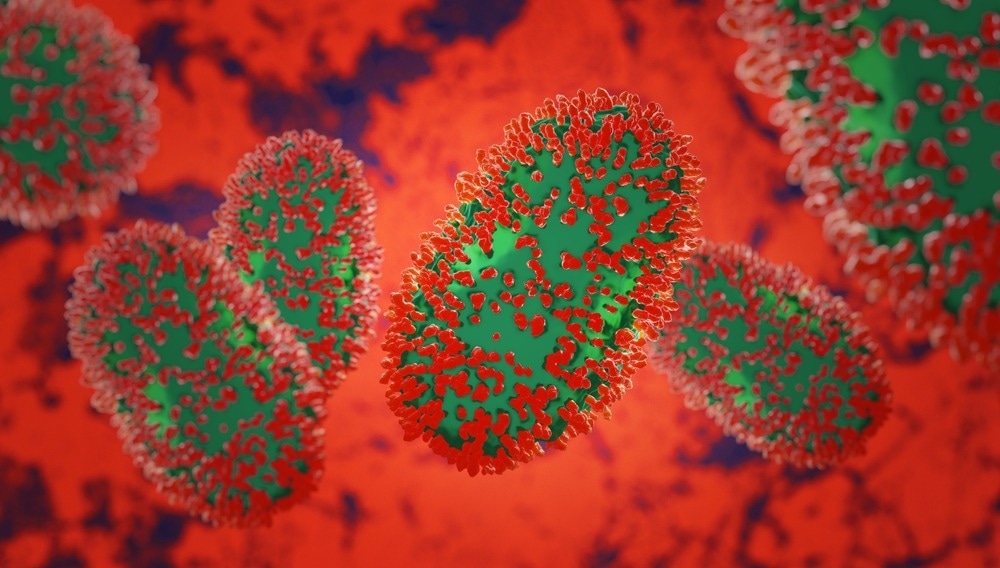A new study published on the preprint server bioRxiv* reports the identification of a cluster of monkeypox virus A.2 lineage genomes from three countries that are distinct from the much larger B.1 lineage responsible for the current outbreak. These observations suggest that A.2 monkeypox cases are not part of the current global 2022 outbreak of the monkeypox virus and instead occurred through a different chain of transmission.

Study: A Distinct Phylogenetic Cluster of Monkeypox Genomes Suggests an Early and Cryptic Spread of the Virus. Image Credit: joshimerbin / Shutterstock.com

 This news article was a review of a preliminary scientific report that had not undergone peer-review at the time of publication. Since its initial publication, the scientific report has now been peer reviewed and accepted for publication in a Scientific Journal. Links to the preliminary and peer-reviewed reports are available in the Sources section at the bottom of this article. View Sources
This news article was a review of a preliminary scientific report that had not undergone peer-review at the time of publication. Since its initial publication, the scientific report has now been peer reviewed and accepted for publication in a Scientific Journal. Links to the preliminary and peer-reviewed reports are available in the Sources section at the bottom of this article. View Sources
Introduction
Until recently, the monkeypox virus was endemic to several central African countries and typically caused single or multiple vesicular lesions that often resolve spontaneously. Infection with the monkeypox virus was previously associated with contact with wild game animals or with infected symptomatic individuals.
Since early May 2022, the monkeypox virus has been identified in multiple non-endemic regions of the world. These patients have rarely reported a history of travel to endemic countries, with about 75% reporting recent travel to another European country. Those infected in the current outbreak are almost exclusively men who have sex with men (MSM), with the virus appearing to be primarily spread through sexual contact.
The symptom profile of the monkeypox infection during the current outbreak has also shifted from previous phenotypes, thus indicating significant changes in virus biology.
The first monkeypox infection of the current outbreak was traced back to a European event where the virus could have been transmitted to many people. Thereafter, the virus spread to 75 countries, with over 20,000 new cases reported by the end of July. Currently, the monkeypox virus outbreak has been designated as a public health emergency of international concern by the World Health Organization (WHO).
As a result, increased genomic surveillance and molecular testing have been conducted, with multiple sequenced genomes uploaded to the Global Initiative on Sharing All Influenza Data (GISAID) database. The monkeypox genome has about 200 kilobase pairs comprising its deoxyribonucleic acid (DNA) double strand.
Recently, nine genomes were uploaded onto GISAID from the United States, Thailand, and India from six clinical isolates that map to a different lineage, A.2. This lineage consists of 16 unique mutations, nine of which are non-synonymous.
Following the phylogenetic model, the researchers at the CSIR Institute of Genomics and Integrative Biology (CSIR-IGIB) attempted to estimate the time from the most recent common ancestor (tMRCA) of this lineage.
Study findings
The tMRCA of the A.2 lineage was on June 25, 2021. The average rate of nucleotide substitutions was much lower than that of the B.1 lineage at 5.53 x 10-5 as compared to 1.13x10-4, respectively, with the B.1 substitution rate increasing.
Thus, the A.2 lineage might have started to spread even years before the early 2022 outbreak, especially since the earliest genome was from a sample collected in July 2021.
The genomes analyzed in the current study were obtained from men who had traveled to the United Arab Emirates or Nigeria. This indicates a separate chain of transmission between humans without direct zoonotic transmission across international boundaries. Importantly, this spread remained unrecognized until the current study.
This transmission chain may not be linked to the large outbreak of monkeypox which occurred in 2022 and has been potentially uncovered due to heightened awareness, surveillance and the wider availability of diagnostics.”
The study findings emphasize the importance of genomic surveillance of all newly emerging pathogens for public health policies and epidemiologic insights.

 This news article was a review of a preliminary scientific report that had not undergone peer-review at the time of publication. Since its initial publication, the scientific report has now been peer reviewed and accepted for publication in a Scientific Journal. Links to the preliminary and peer-reviewed reports are available in the Sources section at the bottom of this article. View Sources
This news article was a review of a preliminary scientific report that had not undergone peer-review at the time of publication. Since its initial publication, the scientific report has now been peer reviewed and accepted for publication in a Scientific Journal. Links to the preliminary and peer-reviewed reports are available in the Sources section at the bottom of this article. View Sources
Source:
Journal references:
Article Revisions
- May 13 2023 - The preprint preliminary research paper that this article was based upon was accepted for publication in a peer-reviewed Scientific Journal. This article was edited accordingly to include a link to the final peer-reviewed paper, now shown in the sources section.